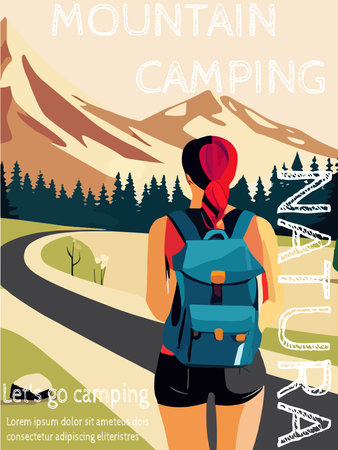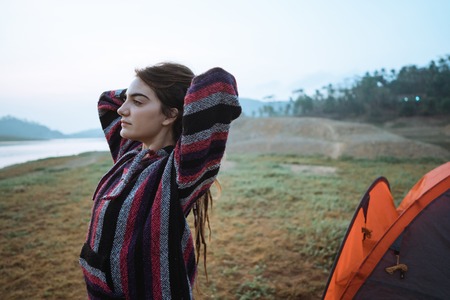Understanding Spring Weather Fluctuations
Spring camping in the United States can be a real adventure—not just because of the beautiful scenery or wildlife, but also thanks to the unpredictable weather. One minute, you might be basking in warm sunshine, and the next, you could be shivering under gray skies or dodging an unexpected rain shower. Temperatures can swing dramatically from chilly mornings to surprisingly hot afternoons, and sudden storms aren’t uncommon. These rapid changes can catch even experienced campers off guard, turning a relaxing trip into an uncomfortable ordeal if you’re not prepared. That’s why understanding how spring weather works is key: it helps you pack smarter and dress in layers so you can adjust easily to whatever Mother Nature throws your way. Layering isn’t just about comfort—it’s a practical strategy for staying safe, dry, and ready for anything during your outdoor adventure.
2. Base Layers: Your Foundation
When it comes to spring camping, your base layer is the secret weapon for staying comfortable through shifting temperatures and unpredictable weather. The base layer sits directly on your skin and acts as the foundation for every other piece of clothing you’ll wear. Its main job is moisture management—keeping sweat away from your body so you don’t get chilled when temperatures drop. This is especially important in spring, when warm afternoons can quickly turn into cool evenings.
Why Moisture-Wicking Fabrics Matter
Cotton may be comfy at home, but out in the wild, it’s not your friend. Cotton absorbs moisture and dries slowly, which can leave you feeling clammy or cold. Instead, opt for synthetic fabrics like polyester or natural fibers like merino wool. These materials are designed to wick moisture away from your skin and dry fast, reducing the risk of chafing and keeping your core temperature stable.
Common Base Layer Fabrics Compared
| Fabric Type | Moisture-Wicking | Drying Speed | Comfort |
|---|---|---|---|
| Cotton | Poor | Slow | Soft, but not ideal for active use |
| Polyester | Excellent | Fast | Smooth and lightweight |
| Merino Wool | Very Good | Moderate | Soft, naturally odor-resistant |
The Right Fit Sets the Tone
A well-fitted base layer should feel snug but not restrictive—it needs to move with you and efficiently transfer moisture without bunching up under other layers. Avoid anything too loose, as it won’t manage sweat effectively, and skip anything overly tight that might restrict blood flow or cause discomfort during long hikes.
Quick Tips for Choosing a Spring Camping Base Layer:
- Look for “moisture-wicking” or “quick-dry” labels.
- Choose a fit that hugs your body without pinching or sagging.
- Avoid cotton for any activity where sweating is expected.
Your base layer sets the tone for comfort throughout your trip. Choose wisely, and you’ll create a solid foundation that keeps you dry, warm, and ready to enjoy all that spring camping has to offer.

3. Middle Layers: Insulation and Versatility
The middle layer is all about insulation and adaptability, which are key for spring camping when temperatures can change quickly. The main goal here is to trap your body heat while still allowing moisture to escape, so you stay warm without getting sweaty or clammy. Fleece jackets, lightweight down, or synthetic insulated vests are popular choices for this layer because they provide excellent warmth-to-weight ratios and are easy to pack away if the weather heats up. Opt for materials that are breathable and quick-drying; a classic fleece pullover is a staple for American campers thanks to its comfort and versatility, while a packable down jacket can be a lifesaver on unexpectedly chilly nights. When choosing your middle layer, look for features like zippered vents or adjustable hems, which let you tweak your insulation on the go. Remember, layering isn’t just about piling on clothes—it’s about building a system that keeps you comfortable as conditions shift throughout your adventure.
4. Outer Layers: Protection from the Elements
When it comes to spring camping, your outer layers are your first line of defense against unpredictable weather. In the U.S., spring can bring sudden rain showers, strong winds, and even chilly evenings, so choosing the right weatherproof jacket or windbreaker is essential for staying comfortable and dry.
Choosing a Weatherproof Jacket
Look for jackets labeled as waterproof or water-resistant. While both offer some protection, waterproof jackets provide a higher level of defense during heavy rain. Breathability is also key—many American brands use technologies like Gore-Tex or eVent that let sweat escape while keeping rain out. Consider features such as adjustable hoods, sealed seams, and zippered pockets to keep your essentials dry.
Windbreakers for Windy Days
Spring breezes can feel especially cold when you’re out in nature. A lightweight windbreaker acts as a shield against gusts without adding much bulk. Opt for a packable style that you can easily stash in your backpack if the weather warms up. Some windbreakers also offer water resistance, making them versatile for light rain or misty mornings.
Comparing Outer Layer Options
| Feature | Waterproof Jacket | Windbreaker |
|---|---|---|
| Main Purpose | Rain protection | Wind protection |
| Breathability | Moderate to high (depending on material) | High |
| Packed Size | Medium to large | Small (often packable) |
| Weight | Heavier | Lighter |
Spring Weather Considerations in the U.S.
The weather can change quickly in many parts of America during spring. In regions like the Pacific Northwest or Northeast, rain is common, so always have a reliable waterproof layer on hand. In drier but windy places like the Southwest, a windbreaker may be all you need most days. Layering these pieces lets you adapt to whatever Mother Nature throws your way.
5. Mixing and Matching for Activity Levels
Spring camping is all about flexibility, and your clothing should work just as hard as you do. Whether youre tackling a steep trail, pitching your tent, or simply hanging out by the fire, being able to adjust your layers on the fly is key to staying comfortable. Here are some practical tips for managing your outfit based on your activity level:
Hiking: Stay Cool and Dry
When youre on the move, especially during a strenuous hike, your body generates heat quickly. Start with a lightweight base layer to wick away sweat and avoid overheating. As you warm up, shed any mid-layers or jackets—stash them in your daypack for easy access. If you hit a windy ridge or take a break, slip on a windbreaker or light fleece to prevent chills. Remember, quick-drying fabrics are your friend if you get caught in a spring shower.
Setting Up Camp: Versatility Matters
Setting up camp usually means bursts of activity followed by periods of standing still. Dress in layers that are easy to remove and put back on. A zip-up hoodie or quarter-zip fleece lets you vent heat as you work but keeps you cozy when the temperature drops. Keep a rain shell handy if the forecast looks uncertain—spring weather can change fast!
Relaxing by the Fire: Cozy Comfort
Evenings can get chilly, especially if theres a breeze coming off the lake or through the trees. Once youve settled down for some smores or stories around the campfire, add those extra layers back on—a thick flannel shirt or insulated jacket over your base layers works great. Don’t forget warm socks and maybe even a beanie; heat escapes quickly from your head and feet when you’re sitting still.
Pro Tip: Layer Storage and Accessibility
Keep your go-to layers within easy reach—either tied around your waist, stuffed at the top of your pack, or tucked into an outside pocket. This way, you can adapt quickly as your activity level changes throughout the day without missing out on any adventure.
Remember: No Two Days Are Alike
The beauty of spring camping is its unpredictability. Mix and match your clothing layers according to what you’re doing—and don’t be afraid to experiment until you find what works best for you!
6. Footwear and Accessories for Spring
When it comes to spring camping, your footwear and accessories are just as important as your clothing layers. The right choices here can make the difference between a comfortable adventure and a miserable trip. Hats are essential for both warmth and sun protection. A lightweight beanie or a brimmed hat can keep your head warm during chilly mornings and shield you from midday UV rays. For your hands, gloves made from lightweight, moisture-wicking materials help maintain dexterity while protecting against cold or damp conditions. Socks play a crucial role in keeping your feet dry and blister-free—opt for wool or synthetic blends rather than cotton to ensure moisture management. Finally, invest in sturdy, waterproof hiking boots with good traction. Spring trails can be muddy or slick, so boots that keep your feet dry and provide support will help you stay comfortable all day. Don’t overlook small accessories like gaiters or sunglasses—they add an extra layer of protection against unpredictable spring weather. By carefully selecting these items, you’ll stay dry, warm, and ready for whatever spring camping throws your way.
7. Common Mistakes and Pro Tips
Layering for spring camping can be tricky, especially with unpredictable weather patterns and rapidly changing temperatures. Let’s break down some of the most common mistakes campers make—and offer up pro-level tips to help you stay comfortable, dry, and safe.
Typical Layering Errors
Wearing Cotton as a Base Layer
Cotton might seem comfy, but it holds onto moisture and dries slowly. That means sweat or rain can leave you cold and damp—never a good combo for spring chills. Always choose moisture-wicking materials like merino wool or synthetic blends for your base layer.
Overpacking Bulky Layers
It’s tempting to bring heavy sweaters or thick jackets “just in case,” but too many bulky layers restrict movement and take up valuable space in your backpack. Focus on lightweight, packable items that can be combined or shed easily as conditions change.
Ignoring Wind and Rain Protection
A common oversight is forgetting a windproof or waterproof shell. Even if the forecast looks clear, spring weather is unpredictable. Always include a reliable outer layer to shield against sudden downpours or chilly gusts.
Forgetting to Adjust Layers
Some campers put all their layers on in the morning and leave them on all day. To maximize comfort, pay attention to your body temperature and the environment—add or remove layers as needed to avoid overheating or getting chilled.
Pro Camper Hacks
Plan Your Layering System Ahead
Lay out your clothing at home before you go. Test combinations together so you know what works best for different weather scenarios, saving time and stress at camp.
Use Zip-Neck Tops for Ventilation
Tops with zip-necks or quarter-zips allow you to dump heat quickly without fully removing a layer—super useful when hiking or moving between sun and shade.
Pocket Organization is Key
Store gloves, hats, buffs, or even hand warmers in easy-to-reach jacket pockets. This way you can add a touch of warmth instantly without digging through your pack.
Dry Out Layers Overnight
If anything gets damp during the day, hang it up inside your tent vestibule (not in direct contact with tent walls). This prevents lingering moisture from chilling you in the morning.
Don’t Forget Your Feet!
Sock layering matters too: bring thin liners plus thicker wool socks so you can adjust warmth without causing blisters or restricting circulation.
Avoiding these pitfalls—and using these simple hacks—can make all the difference for your next spring camping trip. Stay flexible with your layers, listen to your body, and keep an eye on the sky. That way, you’ll be ready for whatever Mother Nature has in store.

